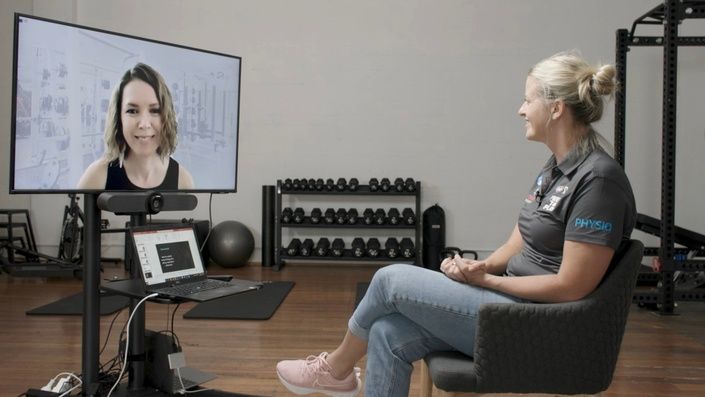Introduction
The Running Injuries: PFJ Pain Masterclass, taught by Dr Natalie Collins and Dr Brooke Patterson, provides a complete overview of the assessment and management of Patellofemoral Pain. This position statement provides clinically relevant, actionable information that may be useful to health professionals.
Part 1: Assessment and Diagnosis
The core criteria for patellofemoral pain (PFP) are described as pain around or behind the patella and aggravated by at least 1 activity that loads the PFJ e.g squat or stairs. There can also be crepitus, tenderness of patella facets, small effusion and pain on straightening knee after having it flexed. Quite often, PFP affects people from the adolescent age up to the older population. The contributing factors are elevated patellofemoral joint (PFJ) stress which can be caused by patella maltracking or increased PFJ reaction forces. Going through a thorough subjective interview takes time, so it is important for the clinician to not rush this process.
- The subjective assessment should focus on understanding the overall load going through the patient's knee including their sports (especially with the adolescent population), occupational demands and everyday activities.
- The objective exam should encompass palpation, pain during aggravating activity, isometric quadricep contraction, single leg squat, strength, and assessing their running technique.
- Other pathologies to consider are patella tendinopathy, fat pad syndrome, ITB syndrome and meniscal issues.
- Refer for medical assistance if suspecting sinister causes for example, hip pathologies such as Slipped Capital Femoral Epiphysis (SCFE), Perthes’ disease and/or a Tumor.
Part 2: Risk Factors and Treatment Directional Tests
During the consultation with a patient with PFP, think about the possible risks and associated factors. Consider the pathoanatomical model to examine the patient to help guide treatment.
- Establish with the patient their aggravating activity with a quantifiable number to pain onset. Then apply an intervention (e.g medial patella glide tape or low dye tape) followed by a re-assessment of that same activity and observe whether there is a quantifiable improvement.
Masterclass Preview
Watch this free preview to hear Dr Nat Collins discuss some key quad and hip exercises that could be useful in managing your patients with PFJ pain.
Part 3: Overview of Treatment and Management Options
Treatment should integrate clinical expertise, best evidence and patient values. The exercises prescribed should target hip, knee, posterior chain and trunk which can be in adjunct with taping, manual therapy, foot orthoses, gait retraining and patient education. The intervention should be primarily used to reduce pain and the rep range prescribed to reflect their impairment of strength, hypertrophy or control.
- The leg extension (effective for isolating the quad), squats and leg press are good options. The patient should not be in more than 2/10 pain whilst performing the exercises.
- Performing the Romanian deadlift (DL → SL) incorporates posterior chain musculature.
- Taping techniques include the fat pad offload with a medial glide of the patella.
- If prescribing orthoses, assess the following: shoe condition and volume, foot length, hardness, required modifications. Bared or FRANKiE4’s are good shoe brands to consider.
Part 4: Persistent Pain, Kinesiophobia and OFJ OA
The majority of people with PFP still have pain in the long term despite having treatment or not. Therefore, it is important for clinicians to educate patients how to manage their knees, so they are able to enjoy running for the years to come. The signs and symptoms of someone who may be developing nociplastic pain are pain severity that is disproportionate to aggravating activity, pain with all movements or when they think about their knee, secondary hyperalgesia, allodynia, multiple areas of pain, pain to contralateral side, summation of pain, and sensitivity to cold.
- Michael Rathleff’s load activity ladder is useful to help with load/pain management and return to running.
- Refer patients onwards, if their impairment is outside of the clinician’s scope or expertise.
- Educating that loading the knee is important for knee health is crucial to reduce risk of kinesiophobia.


